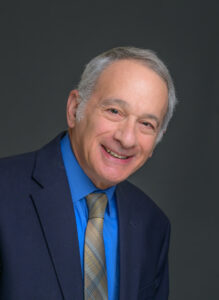
Federal employees and retirees who are enrolled in the Federal Employees Health Benefits (FEHB) program have three enrollment choices. The enrollment choices are: (1) Self Only; (2) Self Plus One; and (3) Self and Family. These enrollments are explained:
- Self Only. Only the employee or retiree is enrolled in an FEHB program health plan with no eligible families enrolled.
- Self Plus One. An employee or a retiree is enrolled in an FEHB program health plan together with one eligible family member. An eligible family member includes a spouse or child under the age of 26. A child under age 26 can be enrolled on the health plan whether or not the child can be claimed as a tax dependent.
- Self and Family. An employee or a retiree is enrolled in a FEHB program health plan, together with multiple eligible family members including a spouse and any number of children who are under the age of 26.
Note that for both the Self Plus One and Self and Family enrollment options, a child aged under age 26 (or a child of any age who is not capable of self-support) because of a mental or physical disability that existed before age 18, is also an eligible family member.
Two key facts related to FEHB program enrollment are noted:
- An employe or retiree does not have to wait until the annual FEHB program “open season” in order to change from Self and Family coverage to Self Plus One coverage. For example, if a federal employee or retiree has Self and Family enrollment in which family members include a spouse and one child aged 25, then when the child becomes age 26 during the year (and therefore no longer eligible to remain on the FEHB program health plan), the employee or retiree can switch enrollment type to Self Plus One in the middle of year (no need for the employee or retiree to wait for the next FEHB program “open season”) thereby saving on monthly premiums once the change in enrollment is made..
- An employee does not have to be enrolled in Self Plus One for the five years before the employee retires in order to meet the five-year FEBH program requirement for continued FEHB program enrollment in retirement. The employee needs to be enrolled in the FEHB program for five continuous years, ending on the day the effective date of retirement. During the five years, the employee can be enrolled as Self Only, Self and Family, or under a family member’s enrollment, such as a spouse. The employee must retire on an immediate CSRS or FERS retirement, thereby receiving a CSRS or FERS annuity. The first annuity check is due to be paid one to two months after the employee retires.
Learn more about your retirement benefits at our No-Cost webinars, featuring Ed Zurndorfer -
Those employees and retirees who are married with no eligible children to enroll on their FEHB program plan, and single parents with one child to cover on their FEHB program plan have the option to enroll as Self Plus One rather than Self and Family. By enrolling in Self Plus One coverage rather than Self and Family coverage, the married employee or single parent can usually save two to three hundred dollars a year in FEHB program premium costs.
But for 2025, there are two national FEHB program health plans (NALC Health Benefit Plan and Foreign Service Benefit Plan) and 54 local FEHB program plans in which monthly Self and Family premiums are less expensive than monthly Self Plus One monthly premiums. For the new Postal Service Health Benefits (PSHB) program, there ae two national FEHB program plans (NALC Health Benefit Plan and Rural Carrier Benefit Plan) and 17 local FEHB plans in which Self and Family premiums are less expensive than Self Plus One monthly premiums.
There are two possible reasons why Self and Family monthly premiums are less expensive than Self Plus One monthly premiums in some FEHB program and PSHB program plans:
- Statutory formula used to calculate the federal government’s contribution. The statutory formula that is used to calculate the federal government’s contribution to the premium cost is based on the average of all plan premiums and requires that OPM calculate a maximum contribution for each enrollment type. In other words, there is a limit as to how much the federal government will contribute towards the cost of a Self Only, Self Plus One or Self and Family enrollment. The federal government contributes the lesser of the maximum contribution or 75 percent of the total premium. The remaining amount is the enrollee’s (employee or retiree) share. In some cases, such as plans with a premium cost that is above the program average, the calculation may result in a higher enrollee share of Self Plus One enrollment than a self and family enrollment.
- Disproportionate high enrollment of older and retired couples with no children. Self plus one was introduced into the FEHB program in 2015. The reason that Self Plus One enrollment was introduced into the program was by forcing to enroll in Self and Family coverage when an employee or a retiree had only one eligible family member to cover, the monthly premium cost actuarially higher. A married couple with no eligible children or a single parent with one eligible child were subsidizing enrollees with more than one eligible family member. Self Plus One premiums should be lower for those individuals.
That has largely proven to be the case over the past eight years. However, during the past eight years there has also been an anomaly in some FEHB program plans that attract a disproportionately high enrollment of older married couples (particularly retirees) with no eligible children. These couples tend to consume more health care and more expensive health care compared to younger employees. For example, the cost of a hip replacement or bypass heart surgery is likely far greater than the cost of giving birth to a baby.
OPM has asked agencies to call to the attention of employees, and OPM is calling to the attention of married retirees that some FEHB program health plan premium rates during 2025 for Self Plus One coverage will be more expensive than Self and Family coverage premium rates.

Ed Zurndorfer, EA, ATA, CFP®, CLU®, ChFC®, CEBS®, ChFEBC℠: Federal Employee Benefits Expert
A former career Federal employee, Ed has published a staggering 1,200+ separate articles on Federal Benefits and Retirement!
Just “Google” his name, and you are likely to find a plethora of sites that contain his writings. Drawn to its mission to reach, teach
and serve Feds, Serving Those Who Serve is the only financial planning practice with which Ed has chosen to affiliate in over
20 years teaching. In addition to conducting Federal Benefits seminars for Serving Those Who Serve, you can find Ed’s
writings here on our blog in the FedZone, and on Fed-Soup, MyFederalRetirement, FederalNews Radio and NITP.
He is a member of the Maryland Society of Accountants, the National Association of Enrolled Agents, the International Society of Certified Employee Benefits Specialists, the Financial Planning Association, the National Association of Health Underwriters,
and the Society of Financial Service Professionals. Since 1999, Ed has taught many thousands of Federal employees about
their benefits, in person and at Federal agencies all over the country. Ed is a true national treasure.
Edward A. Zurndorfer is a CERTIFIED FINANCIAL PLANNER™ professional, Chartered Life Underwriter, Chartered Financial Consultant, Chartered Federal Employee Benefits Consultant, Certified Employees Benefits Specialist and IRS Enrolled Agent in Silver Spring, MD. Tax planning, Federal employee benefits, retirement and insurance consulting services offered through EZ Accounting and Financial Services, and EZ Federal Benefits Seminars, located at 833 Bromley Street - Suite A, Silver Spring, MD 20902-3019 and telephone number 301-681-1652. Raymond James is not affiliated with and does not endorse the opinions or services of Edward A. Zurndorfer or EZ Accounting and Financial Services. The information has been obtained from sources considered to be reliable, but we do not guarantee that the foregoing material is accurate or complete. While we are familiar with the tax provisions of the issues presented herein, as Financial Advisors of RJFS, we are not qualified to render advice on tax or legal matters. You should discuss tax or legal matters with the appropriate professional.


